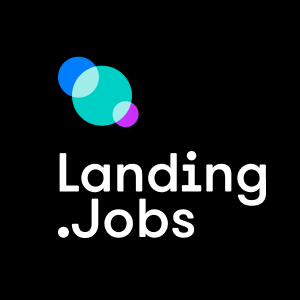
As defined by the Society for Human Resource Management (SHRM), talent onboarding is not just the process of integrating new employees within a company and its culture, or getting them the necessary tools and information to become a productive member of the team. “Onboarding new hires at an organisation should be a strategic process that lasts at least one year, staffing and HR experts say, because how employers handle the first few days and months of a new employee’s experience is crucial to ensuring high retention”, SHRM explains.
A few numbers that back this up
“When employees have regrets about accepting their current job, they’re three times as likely to want to leave”, says the IBM Smarter Workforce Institute. “On average, companies lose 17 per cent of their new hires in the first three months”, they continue.
“Unfortunately, only 15 per cent of companies continue onboarding after six months,” SHRM remembers. “Nearly 90 per cent of employees decide whether to stay or go within that first six months.”
Workers thrive on a positive environment — when they feel they can contribute and are valued, they are more productive. This also has an impact on talent retention: “Employees with the most positive experiences are three times less likely to search for a new job”, IBM says. And they add: “According to the Aberdeen Group, 54 per cent of organisations with a formal onboarding process find that their new hires are more productive, and 50 per cent also experience greater retention of new workers”.
According to a BambooHR survey, “three-fourths of new hires said training during the first week on the job is most important to them”:
- 56 per cent of the respondents said that “having a buddy or mentor at work was very important when getting started”
- 41 per cent of HR professionals felt they needed to update training in onboarding”.
Meanwhile, the Aberdeen Group report found that “high-performing organisations are nearly two-and-a-half times more likely than lower-performing employers to assign a mentor or coach during the onboarding process”.
What an effective onboarding process looks like
Companies can improve these statistics by using onboarding strategies. While every organisation has different techniques, from more formal onboarding processes to a sink-or-swim mentality, one thing is clear: the faster new employees feel welcome and prepared, the faster they’ll contribute to the company’s overall success.
Although onboarding strategies vary according to the organisations and their employees, a few things are common to all well-managed onboarding programs:
- They engage their employees — with a self-explanatory task-driven workflow
- They have ongoing and clear channels of communication
- They facilitate learning at all organisational levels
- They align employees to key business milestones and strategies
- They present information in easily-digestible amounts — you don’t want to inundate your new hires with too much information
- They reinforce their employer brand and culture
- They have well-structured onboarding material (virtually anything that helps develop socialisation, like lectures, videos, printed info, office tours, etc.)
- They provide the employee with both standard onboarding elements (with an understanding of the company overall), and individualised onboarding elements (including items that are specific to the employee’s department, function, and location)
- They use technology to boost and streamline the onboarding experience (the most successful organisations have automated their onboarding programs)
- They make sure roles and responsibilities are outlined for the entire team, including already existing team members.
This of course varies with the size of your organisation and your onboarding goals.
The basics for giving feedback
When you prepare for your employee feedback, it can greatly boost engagement, productivity, and team spirit. Because that’s what it all boils down to: feeling recognised, that we belong, that we’re part of a team.
That’s why it is so important to check in with your new employees regularly to make sure they’re comfortable, happy and engaged:
- During the first week
- For the first few months — have a one-month check-in to review and give thoughtful feedback on the new hire’s early contributions
- For the first three to six months — depending on the employee and the role, check in again between three and six months
- At the end of the first semester (very important to make any adjustments within the onboarding process still)
- At the end of the first year — to prove someone is fully productive and plan for future development, when traditional onboarding transitions into retention and employee satisfaction
- And then at least every quarter/semester — when there’s a shift from on-the-job training to continuous development.
The idea is that you keep showing your employees, whatever their stage at your company, what their career prospects are with you. By spending the first year turning their new hires into seasoned employees, organisations definitely capitalize on the skills and knowledge they bring to the enterprise. “In some cases, successful onboarding programs not only help to retain new hires, but can translate into increased profit”, IBM concludes.
Talent retention
Monster.com reports 30 per cent of new hires turn over within the first two years of employment. Other statistics from SHRM show that turnover can reach 50 per cent in the first 18 months of employment.
If a couple of decades ago one person would have, on average, six jobs throughout their whole career, today’s official numbers see that average rise to 11. And while some say the cost for replacing an employee is over 25 per cent of their annual salary, others say it’s 50 per cent — although you don’t have to be a math genius to understand it’s very costly either way.
And this is why talent development goes way beyond the interview process — quite frankly, it never really ends.
Adopt a talent development strategy
One of the first things you can do to grow and extract top notch talent within your leadership team is to watch and mentor your employees closely, to determine their strengths and weaknesses. You can then plan projects and tasks to help those employees develop their challenge areas, while also giving them room to shine with their current strengths.
Don’t forget to also pay attention to the employees’ ability to succeed in future talent positions. While this can be time-consuming, it’s far better than spending the same amount of time fully onboarding a new employee, as it ensures employee turnover doesn’t affect operations while motivates employees to show off their skills.
Embrace your boomerang talent
Boomerang talent is when someone leaves the company and then returns, which is very common in tech companies and with tech professionals — and there are good reasons for it.
Boomerang hires offer the perfect combo of company and industry knowledge with a fresh perspective, which may explain why boomerang hires are on the rise. Many world leading companies are already embracing this: a Workplace Trends survey shows that 56 per cent of HR professionals and 51 per cent of hiring managers give high or very high priority to former employees who left in good standing.
Here are five more reasons why you should welcome boomerang talent:
1. You remove the risk factor
You have already seen the boomerang hires at work and know their strengths and weaknesses, so no surprises there. You already know whether they’ll fit into the company’s culture.
2. You reduce future turnover
Boomerang hires usually come to stay. Having already left once, they have already gained extra outside experience, and tend to factor in company all of that in their conscious decision to re-join. “There’s also the added psychological benefit of your current workforce seeing employees return, which may be an indication that this is the best place to be”, Entrepreneur Europe adds.
3. You reduce your cost-per-hire
With boomerang hires, you save time and money on recruitment. By maintaining strong links with current employees, you eliminate agency costs and reduce time to rehire your talent in the future.
4. You shorten the onboarding process
Because boomerang hires are already familiar with your company culture and business, they can start being productive faster and have shorter onboarding times — they’ve already been there, done all of that, and can jump right in to begin producing results.
5. You hire better talent
Boomerang hires are former employees, so they understand your context already — plus, also had the chance to gather competitive intelligence, market insight, additional skill sets and viewpoints, and even potentially new clients while they were away. A bit as though they’ve left to pursue professional development or continuing.
Pay attention to your turnover
Generally speaking, a healthy turnover depends on how much it damages your business — in other words, there is no set number for a healthy turnover.
Quoting the news website Chron, “a healthy employee turnover rate is one that allows your business to run smoothly and presents you with more opportunities than headaches. If the bottom 10 percent of your staff typically underperform, then 10 percent may be an ideal turnover rate for your organisation”.
The average turnover
LinkedIn data of half-a-billion professionals shows the turnover rate across all industries globally is 10.9 per cent. But the percentage of full-time employees who leave their organisation every year, voluntarily or not, changes considerably from one industry to another (not to mention other factors, such as compensation or the health of the overall economy).
The turnover per industry
The same LinkedIn data shows the industries with the highest turnover rates are tech (software), retail and media:
- Technology (software) — 13.2%
- Retail and Consumer Products — 13%
- Media and Entertainment — 11.4%
- Professional Services — 11.4%
- Government/Education/Non-Profit — 11.2%
- Financial Services and Insurance — 10.8%
- Telecommunications — 10.8%.
How you can tell if your turnover is healthy
You can start by comparing your rate to the average for your industry. But to better understand whether you have a healthy turnover rate, you should:
- Identify your high-value employees (high performers, senior leaders, technical specialists and similar roles), and monitor their turnover relative to their employment numbers (i.e., how many they are in your company). It’s a bad sign if your best workers leave quickly and regularly, but it may actually be good for you to lose poorly performing staff
- Survey your leaving staff to find out which resignation factors you can influence (lack of career development, conflict, adverse manager practices), and which ones you cannot (such as retirement, career change or family-care issues). Address the factors you can change, measuring your progress each year
- Besides looking at the rate of turnover, also consider the circumstances under which people leave (for example, a key employee who gives many months’ notice and trains a replacement means your turnover is healthier than if managers just walks off their job).
The cost of employee turnover
Regardless of whether it’s healthy or not, it goes without saying turnover is expensive:
- It interrupts the work flow, while creating the need to hire (and train) new staff
- Some sources estimate replacing employees can cost anywhere from 30 to 400% of their annual salary
- Not to mention the higher cost of replacing top-level employees, the risk any replacement involves, the instability it means to the rest of your employees, and how all of this can affect your company as whole.






0 Comments